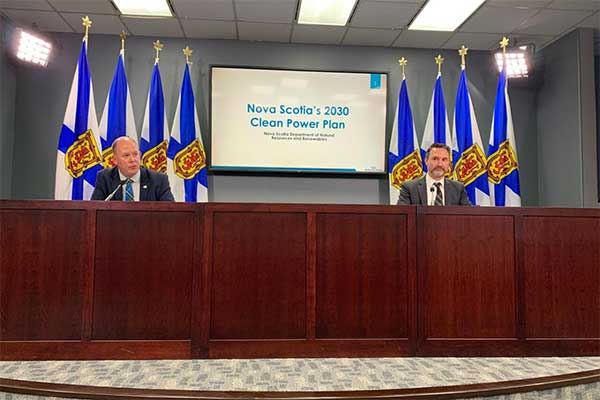- Nova Scotia unveils a new clean power blueprint, steering away from the pricier Atlantic Loop project to instead ramp up wind and solar energy investments.
- This pivot aims for a more economical path to achieve 80% renewable energy reliance by 2030.
- With a balanced approach between local resource utilization and continued hydroelectric imports, the province eyes a sustainable and financially prudent green energy transition.
Nova Scotia has shifted its strategy towards achieving a greener electricity grid by 2030, as declared by Tory Rushton, the Minister for Natural Resources and Renewables.
Instead of progressing with the earlier proposed Atlantic Loop, the province is now poised to enhance its wind and solar energy projects. The new clean power plan will see a 30% increase in wind energy and a 5% rise in solar energy, alongside continued hydroelectricity imports from Labrador’s Muskrat Falls project via the Maritime Link, owned by Emera.
Currently, fossil fuels, primarily coal, generate 60% of Nova Scotia’s electricity. However, by 2030, the mandate is to close all coal plants and ensure that 80% of the electricity is sourced from renewables to mitigate greenhouse gas emissions. This plan encompasses the addition of 1,000 megawatts of onshore wind energy, aiming to produce 50% of the local electricity by the target year.
Rushton articulated that this strategic transition is designed to capitalize on local resources and capabilities, ensuring affordability for Nova Scotia’s ratepayers, unlike the Atlantic Loop. The Loop aimed to facilitate hydroelectric power transmission from Quebec to New Brunswick and Nova Scotia, but its costs soared to $9 billion from an initial nearly $3 billion, rendering it financially unfeasible. The escalated cost, coupled with uncertainty regarding a steady power supply from Quebec, led to the project’s abandonment.
In addition to wind and solar projects, the new plan includes three battery storage sites and an extended transmission link with New Brunswick, enabling broader access to energy markets. These projects were earlier on hold due to a rate cap imposed by the government but have since been revived.
However, skepticism remains among some officials regarding the province’s pace towards decarbonization.
Former Liberal Premier, Iain Rankin, voiced concerns about the timeline to phase out coal plants by 2030, urging for more expedient action. While he supports the new renewable energy projects, Rankin stressed that federal support would be crucial to finance this green transition.
Member of Parliament Kody Blois echoed these sentiments, anticipating federal contributions towards Nova Scotia’s green energy goals. The discourse around the Atlantic Loop’s financial viability had been contentious, with Premier Tim Houston previously warning about its potential to financially strain the province despite federal officials advocating its cost-effectiveness in the long-term shift away from coal.
This revised clean power strategy reflects Nova Scotia’s endeavor to balance economic considerations with environmental responsibilities, aiming for a sustainable and affordable green energy transition by 2030.












Comments